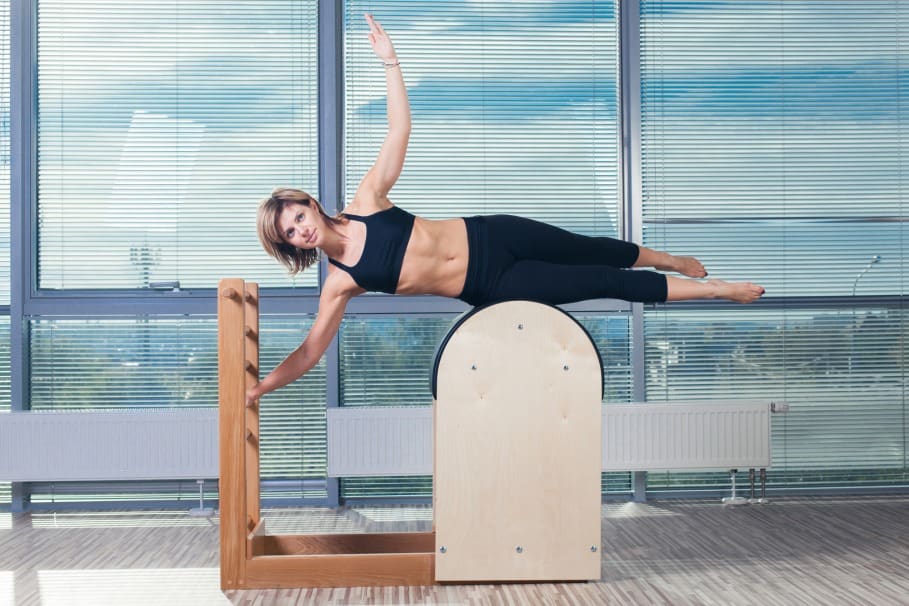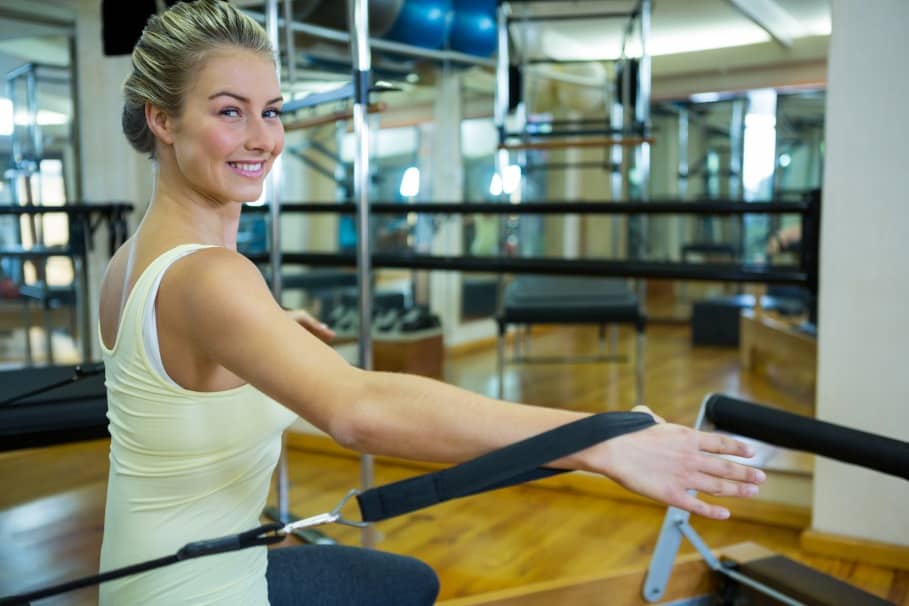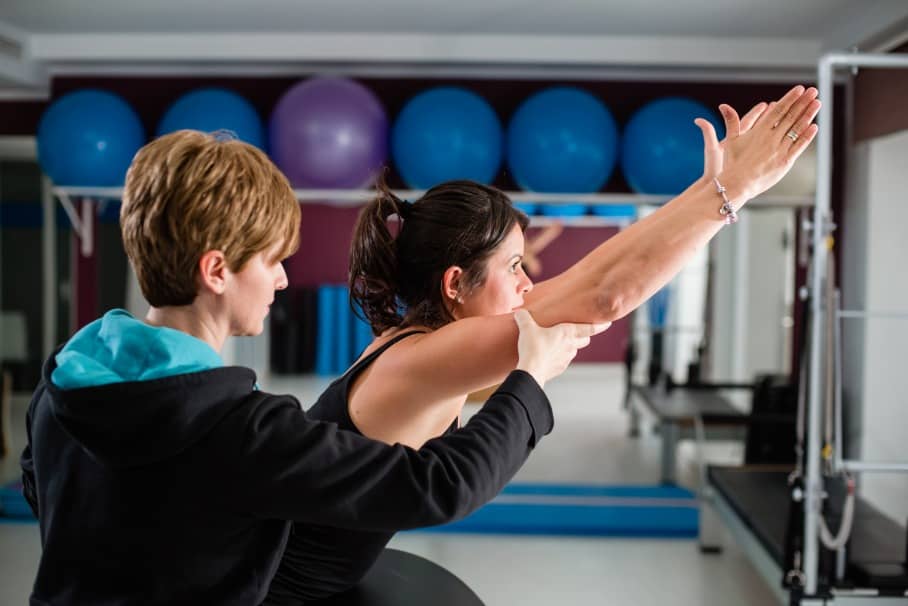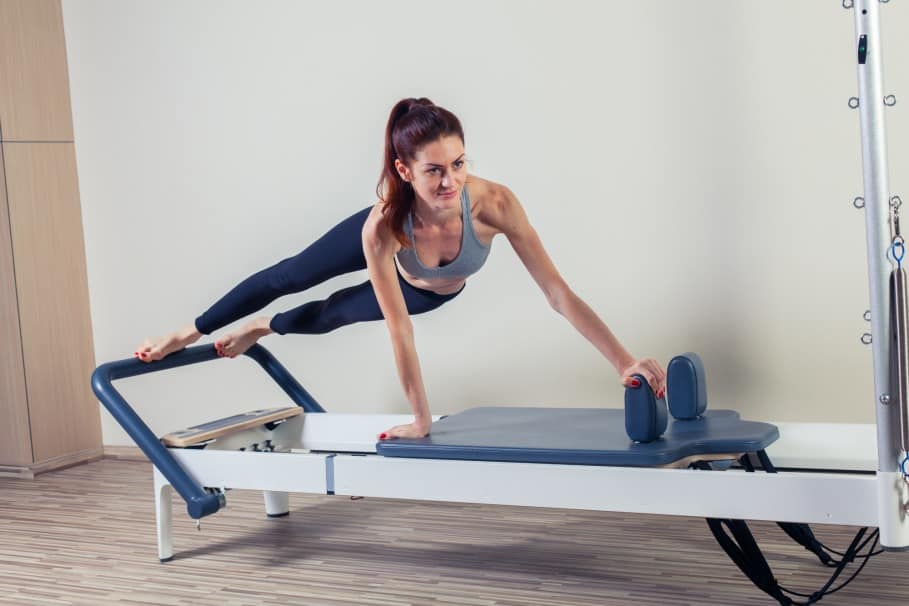Are you ready to learn Pilates? Whether you want to strengthen your weak core, or you aspire to develop long and lean muscles, or you want a low-impact cross-training workout, Pilates will help you achieve your fitness goals.
Why is Pilates an important fitness discipline?
One of the necessary foundations of Pilates is that it creates the strength and stability of your core muscles. If you want to be physically fit, establishing a strong and stable core is a must.
The core is not only essential in sports and working out, but it is also integral in performing daily activities. We use the core in lifting things, bending over, reaching objects above our heads, and carrying heavy weights.
Simply put, the overall condition of your core affects the functionality of your entire body; hence it must be conditioned regularly. Developing a strong base also means you are less likely to encounter injury when working out or performing activities of daily living.
Regardless of what motivated or inspired you to attend your first Pilates class, it is vital that you first learn about how to use a Pilates Reformer machine properly.
Learning how to use it will help you maximize the benefits from your Pilates classes and help you avoid injuries or accidents during subsequent uses.

The Reformer Machine - An Introduction
The Pilates Reformer machine looks downright intimidating. This is especially true if it’s the first time that you will see it in person. But don’t let the aesthetics of the machine discourage you from trying out Pilates.
You may have tried so many workouts and fitness disciplines but failed to see results. Pilates might be the workout discipline that can work wonders for you!
Reformer Pilates has been around for a while now. It was developed as a spur-of-the-moment workout regimen during World War 1 by a German named Joseph Pilates.
He is considered the creator of the Pilates exercise technique, which we now plainly refer to as Pilates. It was at a hospital that Joseph Pilates created the first Pilates Reformer machine by attaching springs on hospital beds so that soldiers who were admitted as patients still can exercise with resistance and build strength at the same time.
During a Reformer Pilates class, the body is positioned on the “carriage,” which then slides back and forth with resistance coming from the springs.
Straps are utilized to move through the exercise routines. All parts of a Pilates Reformer machine have their individual purposes. We will explain to you how each part of the device works.
Springs
The coloured springs attached to the reformer deliver various levels of resistance and stability in each movement. Your Pilates teacher will provide you with further instructions on which coloured spring to use, so make sure you listen to check if you are using the right springs for your class.
The typical colours of the springs are as follows:
- Yellow = very light resistance
- Blue = light resistance
- Red = regular or full resistance
- Green= heavy resistance
Make sure to tune in to your body’s reaction each time you change springs to determine which one is most effective for you. If you are suffering from low energy levels or if you feel a bit unbalanced, you need to raise your hands so the instructor can adjust to a lower resistance that suits you.

Strap
A Pilates Reformer machine features a strap that functions as a long and short set. These two straps have loops at each end. The inside loop is typically wrapped around the shoulder rests.
The straps are used in various techniques, but typically, the shorter straps are used to create more substantial tension, such as in the case of the lower body and ab-centric movements.
On the other hand, the long straps that are attached to the carriage are generally used for traditional Pilates routines that focus on stability and balance while on the carriage.
Similar to the springs, the Reformer straps also provide tension. When placing your feet into the straps, lie down, and position your head between the two shoulder blocks.
Extend your hand and reach behind to remove the loops from the blocks. Bend your knees slowly and place the loop around each of your feet.
Foot Bar
You need to change your foot bar up or down during class, and you need to adjust it based on the length of your leg and torso. When lying down, your legs should be at a 90-degree angle at the knee, and your shoulders should be comfortably positioned against the shoulder rest of the machine.
To initiate bar movement, hold each side of the bar and lift, but in a way that won’t lock on one side.
Jumpboard
If you want to experience a more intense workout, replace the foot bar with a jump board. The jump board is a padded plate attachment that facilitates running, jumping, and hopping exercises without placing stress on your joints.
The spring tension cancels gravity from the equation so that you will feel light and almost weightless.

Friendly Reminders During your First Pilates Session
To build up your confidence for your first-ever Pilates class, here are dos and don’ts that you should keep in mind:
To get the most out of your Pilates session, make sure to find a class led by a certified and skilled instructor. An experienced instructor will guide you through all the fundamental movements and ensure that you are executing the movements right.
They also make sure you don’t get injured in the process, too.
- The first class of Pilates might not be as challenging as you thought it to be. The first session should be all about executing proper quality movements.
- The first Reformer Pilates session will be focused on the basics. Before you can even progress to more difficult routines, you need to learn all beginner movements.
- Mastering the basics will help you once you’re ready to perform advanced and deep core movements.
And lastly, do not forget to have fun during your first Pilates class. If you take your first class seriously and heavily criticize yourself for not executing the routines properly, chances are you won’t sign up for a second class.
Do not be hard on yourself during your first few Pilates sessions. Just like in any discipline, practice makes perfect!


